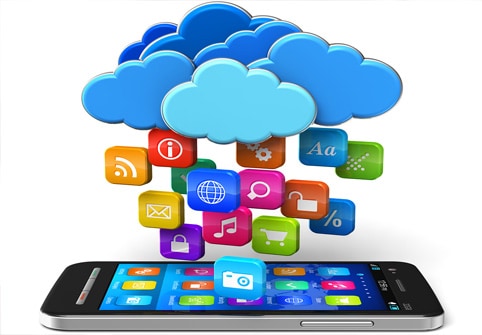
In
this article I analyzed several other published research papers which
discussed about Mobile Cloud Computing for the Big Data Management in Future Smart Phone Applications. Findings listed
below,
·
Static mobile
resources may not be able to support large-scale backend computational
requirements. It creates key bottleneck in their computational capability and
the computational power, in terms of processing and memory, is severely limited
compared to traditional computers.
·
Most of mobile
agents are based on expensive and inflexible communication methods that require
the installation of software and hardware components. These issues are solved
using the cloud computing concept, as there is no need for extra storage and
computation medium. Public cloud, can provide elastic and “unlimited”
computation and storage resources with adjust the amount of resources according
to the service requests and provide large-scale deployment easily.
·
There are three
components at the cloud end: the proxy, code repository and server. The proxy
provides a gateway between the mobile device and the cloud backend. Code
repository provide the logic to provide the service and server provide the high
speed computational capability.
Subject
areas which currently use big data management through mobile cloud computing
via smart phones described below. Special algorithms process millions of real
time data with the help of high tech backend servers.
·
Well reputed
banks, financial institutes, insurance companies’ use mobile banking /
financing facility for give basic banking / financing services to their
customers specially through smart phone apps.
·
Most of the
social media sites, wiki sites, blogging sites and photography sites use smart
phone apps to connect their users online.
·
Online shopping
malls, restaurants use smart phone apps to do their business transactions, good
and services purchases.
·
Email service
providers, online database provides also use smart phone apps to expand their
services to the clients.


In
current scenario most of the organizations use this smart phone apps to give
their limited services to their clients 24 X 7 and anywhere. Not only that
most of the services based on the financial transactions along with collecting,
storing, analyzing and sharing data. Another advantage of using this is
increase mobility of the services that they can provide to the clients with
high security, fast transaction and data transmission back end.
But
apart from current application areas this can be applicable in several other
areas to serve the people.
·
Apple introduced
its new Cloud Service Offering iCloud on June 2013 and Apple’s plan to launch a
new streaming music service apart from the current I tunes service. Apple’s
upcoming cloud music service will have the ability to scan your hard drive and
then mirror the users’ music collection on its own servers. Which means in
future cloud based app may get the responsibility of song repository of smart
phones and give your favorite according to your listening pattern.
·
Governments can
host a cloud based web service which can hold entire details about the citizens
with high security. Then using mobile app citizens can get some of the
government services. Authorized Officers can update the details with proper
manner. (This has some complexities to solve)
·
Cloud and Web
based Health management systems can be implement in the hospitals. Using patient’s
smart phones, system can get the information from the patients and stored in
cloud. The information that
resides in the cloud is managed by the hospital management staff. Using that records doctors & staff can generate
some Meta data about the patients and their issues patterns.
·
Cloud computing
can be merge with TAP (Telco Application Platform) Systems, which just use SMS,
USSD, Charging gateways to give mobile services to their user. Those
information can be stored in cloud database and make them useful for reward the
subscribers and use for the other calculations.






